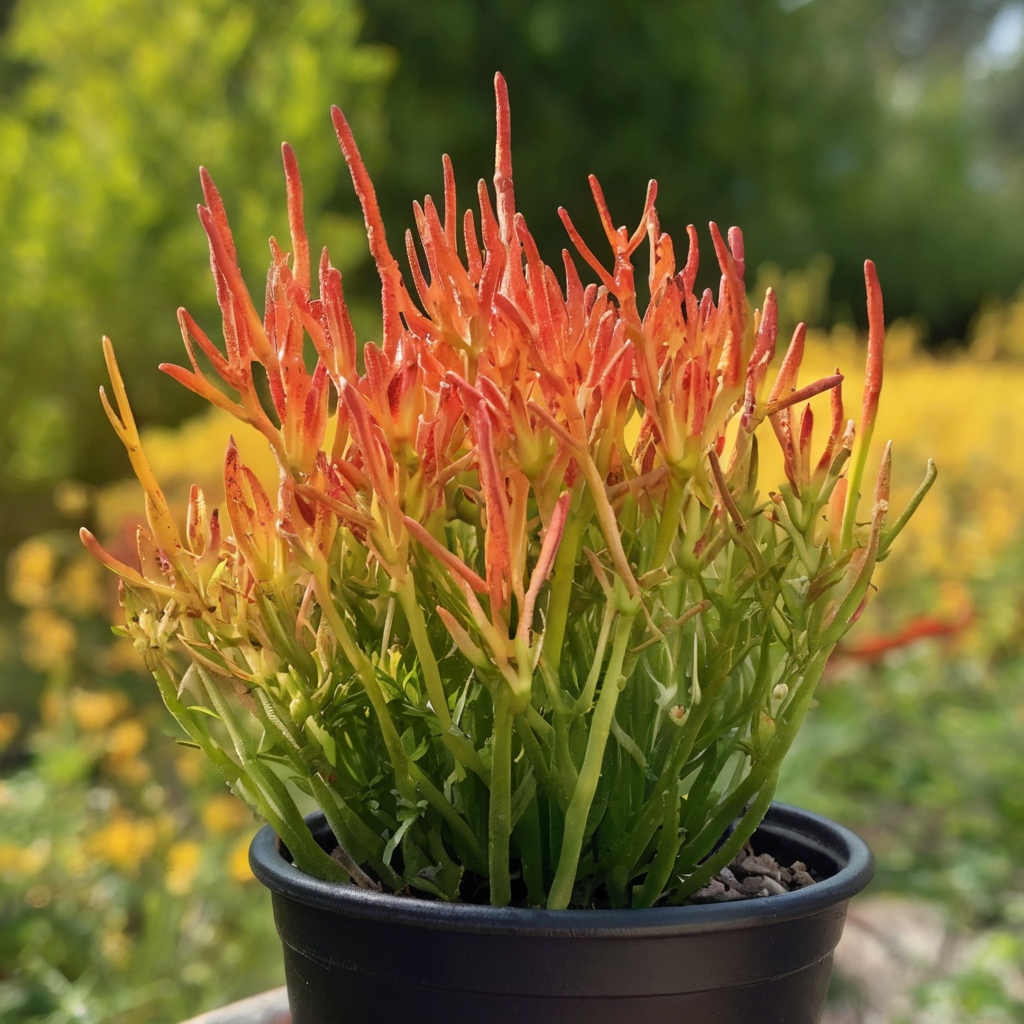
The firestick plant, also known as Euphorbia tirucalli, Pencil Cactus, or Sticks on Fire, is a striking succulent that has gained popularity for its unique appearance and minimal care requirements. Despite its intriguing look, there are specific care guidelines that every plant enthusiast should be aware of to ensure its healthy growth. This article delves into the critical aspects of firestick plant care, focusing on watering, light, and soil needs.
A Brief Introduction to the Firestick Plant
The firestick plant is native to Africa and belongs to the Euphorbia genus. Its distinct, pencil-thin stems can take on a vibrant red or orange hue, particularly in cooler temperatures or under stress. This color transformation is one of the reasons for its common name, “Sticks on Fire.” The plant can grow up to 25 feet in its natural habitat, but when cultivated as a houseplant, it typically reaches a more manageable height.
The Importance of Watering: Striking a Balance
Watering the firestick plant correctly is perhaps the most critical aspect of its care. Overwatering can be fatal, leading to root rot, while underwatering can cause the plant to dry out and lose its vibrant color.
Investigating the Watering Needs
Overwatering: A Common Mistake
Firestick plants are succulents, meaning they have adapted to survive in arid conditions by storing water in their stems. This adaptation makes them highly susceptible to overwatering. One of the primary symptoms of overwatering is a mushy stem base, often accompanied by a foul odor. The roots of the firestick plant are particularly prone to rot if they remain in waterlogged soil for extended periods.
Underwatering: Less Frequent, But Harmful
On the other hand, underwatering, while less common, can still harm the plant. Firestick plants can endure drought conditions, but prolonged dryness will cause their stems to shrivel and become brittle. A clear sign of underwatering is the fading of the plant’s vibrant red tips, which may turn brown and dry.
Establishing a Watering Routine
To establish a proper watering routine, it is essential to understand the plant’s natural cycle. During the growing season (spring and summer), the plant will need more frequent watering compared to the dormant period (fall and winter). A general rule of thumb is to water the plant thoroughly, then allow the soil to dry out completely before watering again. Depending on the climate, this might mean watering every two to three weeks during the growing season and once a month or less during dormancy.
Light Requirements: Mimicking Natural Conditions
Light is another crucial factor in firestick plant care. As a plant native to sunny, arid environments, it thrives in bright light conditions.
Investigating Light Needs
Optimal Light Conditions
Firestick plants prefer full sun to partial shade. In an indoor setting, placing the plant near a south or west-facing window will provide it with the necessary light intensity. For optimal growth and color, the plant should receive at least six hours of direct sunlight daily.
Insufficient Light: The Hidden Danger
Insufficient light can lead to a range of problems, from etiolation (where the plant becomes leggy and stretches out) to a loss of the vibrant red coloration that makes the plant so appealing. In extreme cases, lack of light can weaken the plant, making it more susceptible to disease and pests.
Adapting to Indoor Conditions
For those growing firestick plants indoors, it may be necessary to supplement natural light with artificial lighting. Full-spectrum LED grow lights can provide the necessary light intensity and duration, especially during the shorter days of winter. It is essential to monitor the plant closely and adjust its position or lighting as needed to ensure it receives adequate light.
Soil Requirements: Ensuring Proper Drainage
Soil composition plays a pivotal role in the health of firestick plants. The right soil will support root health and prevent waterlogging.
Investigating Soil Needs
Well-Draining Soil: A Must
Firestick plants require well-draining soil to thrive. A soil mix designed for cacti and succulents, which typically contains sand, perlite, and organic matter, is ideal. This type of soil ensures that excess water drains quickly, reducing the risk of root rot.
Avoiding Heavy, Clay Soils
Heavy, clay-based soils should be avoided at all costs. These soils retain water and can suffocate the roots, leading to rot. If you only have access to standard potting soil, amending it with coarse sand or perlite can improve its drainage properties.
Potting and Repotting Considerations
When potting or repotting firestick plants, choose containers with drainage holes to prevent water from accumulating at the bottom. Terracotta pots are particularly effective as they allow for better airflow and moisture evaporation compared to plastic or ceramic pots.
Repotting should be done every two to three years, or when the plant outgrows its container. During repotting, check the root system for any signs of rot or disease and trim away affected areas with sterilized tools.
Conclusion: Mastering Firestick Plant Care
Caring for a firestick plant can be a rewarding experience, provided you understand and meet its basic needs. By investigating and adhering to the proper watering, light, and soil requirements, you can ensure that your firestick plant remains healthy and vibrant.
Summary of Key Points
– Watering: Water thoroughly and allow the soil to dry out completely between waterings. Avoid overwatering and underwatering.
– Light: Provide at least six hours of direct sunlight daily. Supplement with artificial light if necessary.
– Soil: Use well-draining soil, preferably a cactus or succulent mix. Avoid heavy, clay-based soils.
